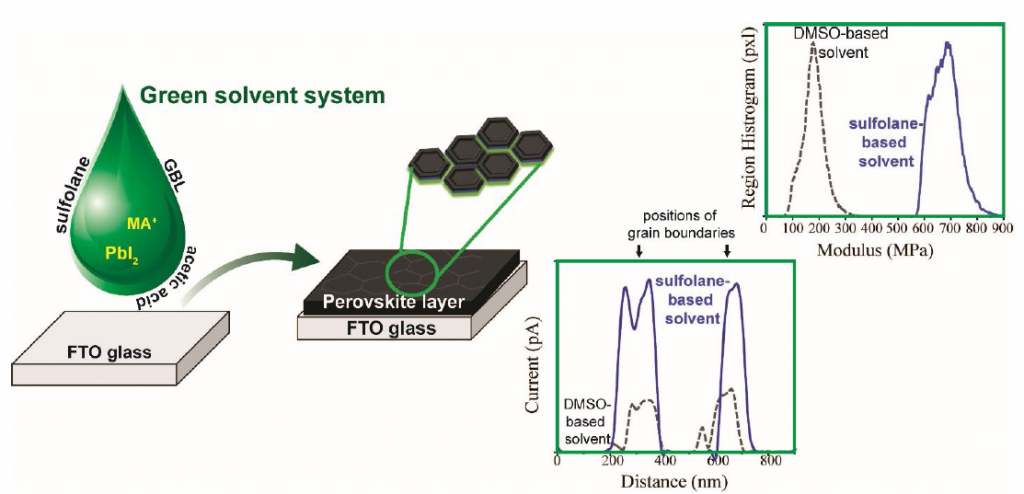Pasit Pakawatpanurut
Photovoltaics, perovskite in particular, has become one of the most promising energy conversion technologies that can potentially address both of the global energy demand and the need for sustainability. To ensure that the technology is safe to human health and the environment especially when implemented large-scale, greener chemicals such as solvents need to be used in the fabrication process. In this work, a different, safer solvent system that utilizes sulfolane, γ-butyrolactone (GBL), and acetic acid (AcOH) is proposed. Surprisingly, in addition to its greener potential, this solvent system also resulted in the perovskite layer that showed several positive changes. Firstly, the perovskite crystals were larger and had improved quality. Additionally, the grain boundaries were more rigid and allowed for better flow of electrical current. These changes were attributed to the sulfolane-infused interfaces between the crystals. These interfaces also acted as a barrier against moisture, leading to improved device performance.

